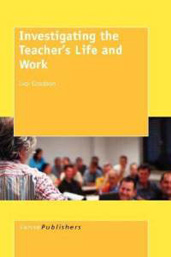Investigating the Teacher's Life and Work
A Guide to Life History Interviews
This is I think a hard lesson to learn and a hard rule to operate. We are trained as social scientists and as academics to ask questions and to interrogate our subjects. In life history work, the aim is to get the subject talking and above all to listen closely. Always remember, if questions that are crucial are not answered in their own time by the life storyteller, they can always be asked later (just keep a running note of them on your pad as questions emerge and return to them later). This is not to say that a well-timed question will not help – it often will – but the point is to help the life storyteller to tell their story, not to get them to help you tell your story or answer your questions.
Flow <-> Focus
Coverage <-> Depth
The same balance of concerns should inform decisions about focus and coverage, and the development of flow and depth. When a transcript of a life history interview is produced, it is easy to see if the life storyteller is ‘flowing’ (M. Csikszentmihalyi, 1991) or deepening. There is a fluency to the story and one can see how the teller is in touch with their deep sense of themselves and their storylines. Normally, the interviewer only provides the occasional ‘prompt’ or question. Meanwhile, the ‘story’ proceeds with its own rhythm and integrity. In a sense, this fluency should not be surprising to us – human beings are storytelling animals. All the time we are relearning our own stories, trying them out with others and ourselves. Our story is a practised part of ourselves. The task of the interviewer is to tap into this ongoing narrative flow which is part of the living condition, not to keep interrupting it with our own questions and stories.
2) Selecting your informants
To some extent, this will depend on whether a full life history, a thematic life history or an occupational life history are being undertaken, but normally it is important to establish a spectrum of interviewees. Sometimes this can be achieved by conducting an initial survey to pinpoint the diversity of cases and themes to be examined. An alternative strategy is to conduct a series of pilot interviews in order to establish the spectrum of cases and themes under review.
It is always important not to simply choose informants who appeal to one’s own instinctive story lines or sympathies. This is a fairly common complaint about life history: that the life history interviewer chooses informants who are effectively telling his or her own story. For example, in teachers’ life histories, often the more pioneering or innovative teachers are chosen. It is less common for the more conformist or conservative teacher to be chosen. This is often because the interviewer may be a past teacher has moved into an academic position and stories his/her experiences as that of a pioneer or innovator. So defining a spectrum of life history informants is a very important first stage.
